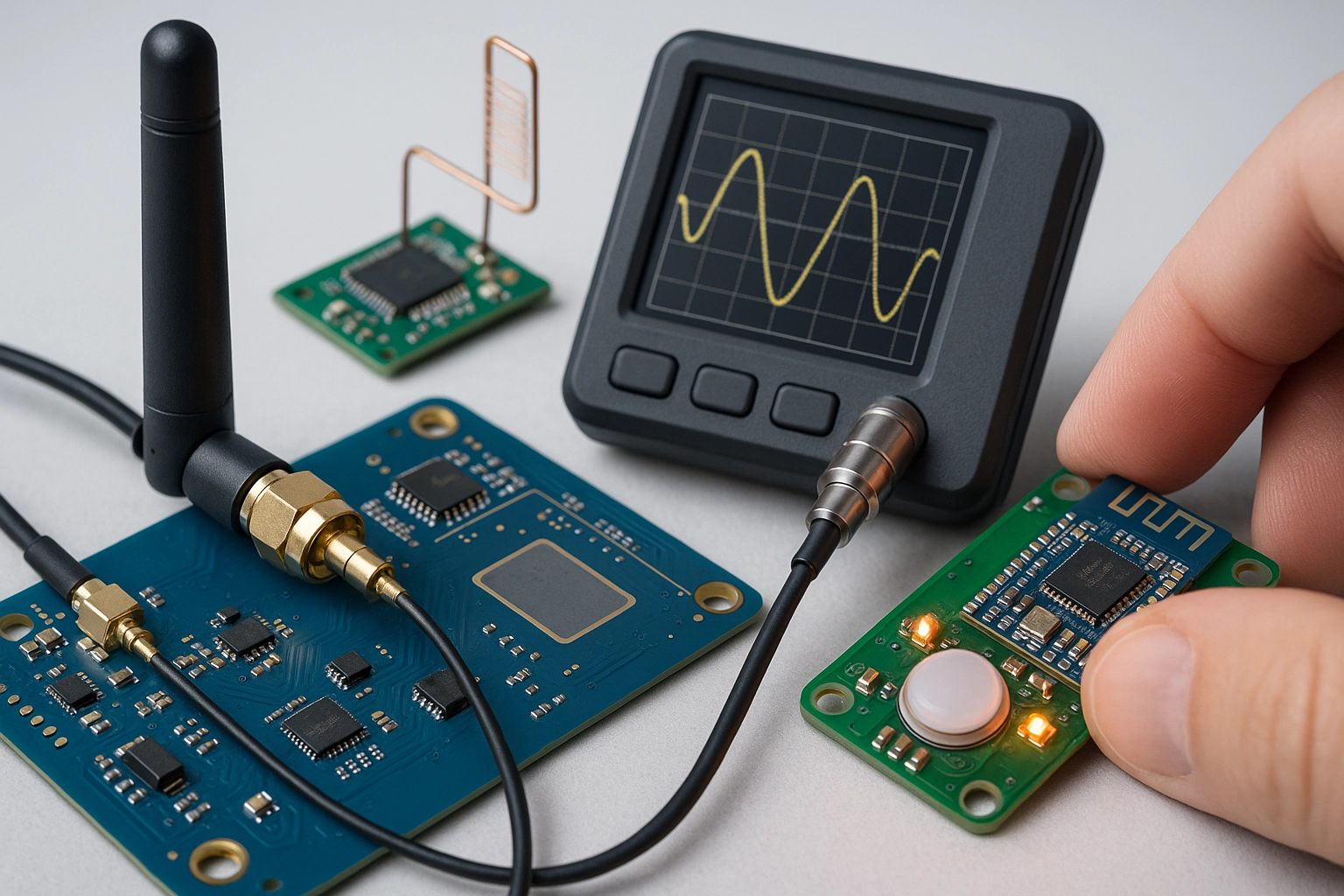ANSI C63 25 Automotive Wireless EMC Testing
The ANSI C63.25 standard is a critical component in ensuring that automotive wireless devices meet stringent electromagnetic compatibility (EMC) requirements, which are essential for the safe and reliable operation of vehicles in an increasingly interconnected world.
Wireless connectivity has become indispensable in modern automobiles, with features like Bluetooth, Wi-Fi, and cellular networks facilitating a wide range of functionalities from infotainment systems to advanced safety measures. However, these wireless devices must not only perform their intended functions but also do so without causing harmful interference to other electronic equipment within the vehicle or external wireless environments.
The ANSI C63 25 Automotive Wireless EMC Testing ensures that all automotive wireless devices comply with strict electromagnetic compatibility (EMC) requirements. This testing is crucial for avoiding interference between different components of a vehicle and ensuring that the device does not disrupt other essential systems such as braking, steering, or navigation. The standard focuses on two primary aspects: emission limits and immunity to external signals.
Emitted electromagnetic radiation can potentially interfere with other electronic devices in close proximity. In an automotive setting, this could mean adverse effects on the vehicle's internal communication networks or external wireless systems operating within the vicinity of the vehicle. Conversely, the device must also be robust enough to withstand any interference it might encounter while performing its functions.
The ANSI C63 25 standard sets out specific limits for both conducted and radiated emissions, as well as immunity levels against various types of electromagnetic disturbances. These standards are designed to protect not only the wireless device itself but also other critical systems within the vehicle. The testing process involves a series of rigorous procedures aimed at evaluating how effectively each component complies with these stringent requirements.
During the testing, engineers use specialized equipment that simulates real-world conditions under which automotive devices will operate. This includes various test chambers capable of reproducing different environmental factors such as temperature, humidity, and altitude changes. By subjecting the wireless device to these controlled environments before actual deployment, manufacturers can identify potential issues early in the development cycle.
The testing process typically involves multiple stages, each focusing on specific aspects of EMC performance. For instance, one stage might concentrate solely on assessing radiated emissions while another examines conducted emissions. Another crucial aspect is the evaluation of immunity to external signals such as interference from other wireless devices or static electrical discharges.
Compliance with ANSI C63 25 standards ensures that automotive manufacturers can confidently deploy reliable and interference-free wireless systems in their vehicles. This not only enhances user experience by providing a seamless connection but also contributes significantly to overall vehicle safety by preventing any malfunctions caused by electromagnetic interference.
Scope and Methodology
| Test Parameter | Description |
|---|---|
| Conducted Emissions | The measurement of electromagnetic interference that is transmitted through wires or cables. |
| Radiated Emissions | Evaluation of the electromagnetic energy emitted from a device in free space, typically measured in decibels per meter (dB/m). |
| Immunity to External Signals | Determining whether a device can function correctly when exposed to various types of interference. |
| Frequency Range | The range over which the emissions and immunity tests are conducted, usually covering common wireless frequencies used in automotive applications. |
| Test Chamber Environment | A controlled environment simulating different real-world scenarios to ensure accurate testing results. |
Quality and Reliability Assurance
The ANSI C63.25 Automotive Wireless EMC Testing plays a vital role in maintaining high quality and reliability standards within the automotive industry. By adhering to these stringent requirements, manufacturers can ensure that their products operate seamlessly across diverse environments without causing or suffering from interference.
One of the primary benefits of this testing is its ability to identify potential issues early on during the design phase rather than after the product has been released into the market. Early detection allows for necessary adjustments and improvements, thereby reducing costly recalls and improving customer satisfaction.
In addition to enhancing quality assurance processes, compliance with ANSI C63 25 also contributes significantly towards achieving reliable performance metrics. Reliable products are not only safer but also more efficient in terms of resource consumption and environmental impact.
Moreover, adherence to these standards fosters trust among consumers who know that their vehicles meet industry-leading safety and quality benchmarks. This trust is further reinforced by independent third-party certification bodies which oversee the testing process ensuring impartiality and accuracy.
Customer Impact and Satisfaction
The impact of ANSI C63 25 Automotive Wireless EMC Testing extends beyond just manufacturing plants; it directly affects customers by providing them with safer, more reliable vehicles. When every component meets the required standards, it ensures that all parts work harmoniously together without causing disruptions or malfunctions.
For instance, if a vehicle's infotainment system is not properly tested for EMC compliance, there could be instances where music playback or navigation functions may fail due to interference from other wireless devices. Such failures can lead to frustration among users and pose risks in emergency situations.
In contrast, when all systems are rigorously tested according to ANSI C63 25 standards, they function flawlessly even under challenging conditions such as heavy rain or during severe weather events. This guarantees a consistent level of performance throughout the lifetime of the vehicle.
Furthermore, satisfied customers contribute positively towards brand reputation and market share growth. Positive reviews about reliable products encourage potential buyers to choose specific brands over competitors. This not only boosts sales but also enhances brand loyalty among current clients.





